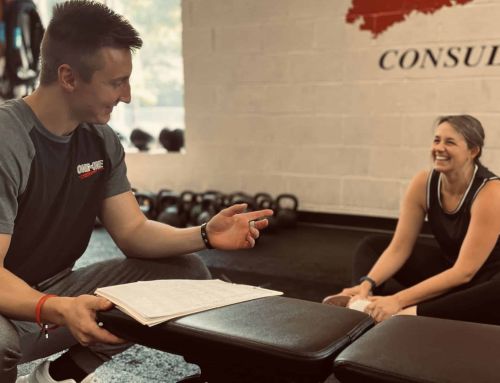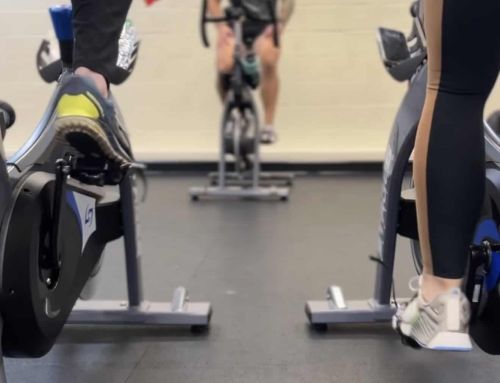
By The One on One Team
Last Updated: 10/12/25
Shoulder Packing: An Essential Technique for Safe Strength Training
Shoulder health is one of the most important foundations of safe and effective strength training. That is why you often hear us cue you to “pack your shoulders.” This simple technique creates stability, protects the joint, and helps you get more out of every exercise.
The Basics: How Your Shoulder Works
The shoulder is the most mobile joint in the body, allowing you to press overhead, pull yourself upward, reach across your body, and perform athletic movements.
With this mobility comes a tradeoff: less stability. Unlike the hip, which sits deep inside a strong socket, the shoulder is more like a golf ball resting on a tee. Its position is secure only when the surrounding muscles, including the rotator cuff muscles, lats, trapezius, and other stabilizers, are working together to hold it in place.
Without this support, the shoulder can drift into positions that increase the risk of irritation or injury. When we pack our shoulders, we actively engage the muscles that provide this stability, keeping the joint centered and prepared to handle load safely.
Shoulder Packing: What It Is
When we say “Pack your shoulders,” we are asking you to set the joint into a strong, supported position. To achieve this position:
- Begin with a neutral spine, avoiding excessive extension or flexion of the spine.
- Draw the shoulder blades down and slightly back, as if sliding them into your back pockets.
- Keep the neck long by gently tucking the shoulders away from the ears.
- Avoid pinching the shoulder blades together excessively. The aim is to anchor, not squeeze.
Packing the shoulders is the link between mobility and stability. It prepares the joint for safe, powerful movement.
Applying Shoulder Packing to Exercises
Once you understand how to pack your shoulders, the key is learning to hold that position through different movement patterns. Here is how it applies in the most common ones:
Pressing (Push-Ups, Bench Press, Landmine Press)
At endpoint one, pull your shoulders away from your ears and set them into a packed position. As you lower the weight to endpoint two, maintain that tension so the shoulders stay anchored. When you press back to endpoint one, the shoulders should still feel packed and stable, not drifting upward or forward.
Pulling (Rows, Pulldowns)
At the starting position, allow a slight stretch through the shoulders so the muscles are lengthened, but do not let them roll forward into a rounded position. As you pull, draw the shoulders down and back into a packed position. At the end of the movement, the shoulders should remain packed and strong, allowing the back muscles to contract fully.
Stabilizing (Farmer Carry, Deadlifts, Lunges)
At the starting position, set your shoulders down and back into a packed position. From there, the upper body should remain rigid. As you carry or lift, the weight should not pull the shoulders out of position. At the end of the movement, the shoulders should still feel locked in, stable, and connected to the torso.
Takeaway
Shoulder packing is more than a cue. It is a technique that protects the joint, improves strength, and supports long-term shoulder health. Whether you are pressing, pulling, or stabilizing, focus on anchoring the shoulders into a stable position. Over time, this practice will become automatic and will enhance both safety and performance.




